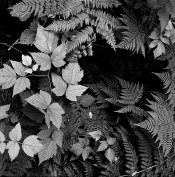Jessestr
Member
- Joined
- Mar 31, 2014
- Messages
- 399
- Format
- 35mm
Context / Long story short: Always had very thin negatives, quit film photography 3 years ago.. but I'm back.
Changed film stock to HP5+ instead of Tri-X. Still using my 5 y/o HC-110 bottle which looks very brown.
Problem:
Developed a new test roll to see if my camera was still working and the negatives look very thin (ugh).
I took the recommended time of Ilford HP5+ and HC-110 on dilution B at 20C which is 5 minutes.
I compared to older b/w negatives which were developed by a lab and they look a lot denser and they print/scan a lot better as well.
Exposure seems okay, sometimes a little under.
I use distilled water to mix my developer, and check temp for 20C!
Solution: Increase development time.
Question: How is it possible that my development time has to be increased so much to achieve the same density as opposed to the data sheets telling it should be only 5 minutes of development time? What could be so different to my equipment / process that influences development time so much compared to other people?
Could the HC-110 be exhausted due to age? Even though I read the syrup lasts for a very long time. Bottle is 1/3rd full. Any other guesses?
Changed film stock to HP5+ instead of Tri-X. Still using my 5 y/o HC-110 bottle which looks very brown.
Problem:
Developed a new test roll to see if my camera was still working and the negatives look very thin (ugh).
I took the recommended time of Ilford HP5+ and HC-110 on dilution B at 20C which is 5 minutes.
I compared to older b/w negatives which were developed by a lab and they look a lot denser and they print/scan a lot better as well.
Exposure seems okay, sometimes a little under.
I use distilled water to mix my developer, and check temp for 20C!
Solution: Increase development time.
Question: How is it possible that my development time has to be increased so much to achieve the same density as opposed to the data sheets telling it should be only 5 minutes of development time? What could be so different to my equipment / process that influences development time so much compared to other people?
Could the HC-110 be exhausted due to age? Even though I read the syrup lasts for a very long time. Bottle is 1/3rd full. Any other guesses?
Last edited:












